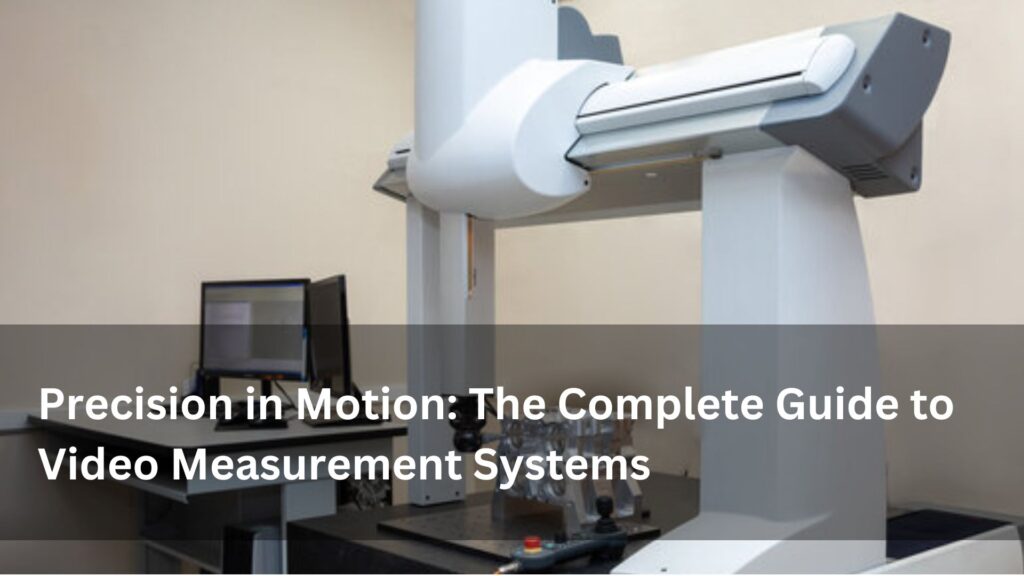In the world of modern manufacturing and quality assurance, precision is more than just a goal—it’s a necessity. Industries such as aerospace, automotive, medical, and electronics depend on advanced tools to ensure components meet stringent standards. One of the most groundbreaking technologies transforming the quality inspection process is the video measurement system. This high-tech solution combines optics, software, and automation to deliver rapid, non-contact, and ultra-accurate measurements. In this comprehensive guide, we will explore what a video measurement system is, how it works, its benefits, applications, and what the future holds for this technology.
What is a Video Measurement System?
A video measurement system (VMS) is a non-contact optical inspection device that uses high-resolution cameras, lenses, lighting, and intelligent software to measure the dimensions and geometries of components. Unlike traditional tools such as calipers or micrometers, a VMS does not physically touch the part, making it ideal for delicate, small, or complex shapes.
How Does a Video Measurement System Work?
The operation of a video measurement system revolves around capturing images of a part and analyzing them using sophisticated software. Here’s a step-by-step overview:
Lighting: LED ring lights or coaxial lights illuminate the part.
Image Capture: A high-resolution camera captures the object’s image.
Zoom/Magnification: Optical or digital zoom adjusts focus for precise inspection.
Measurement: Software identifies features such as edges, circles, and lines.
Data Output: Results are recorded and exported for quality control reporting.
This contactless process ensures no physical distortion, making it highly suitable for micro-manufactured parts.
Key Benefits of a Video Measurement System
Using a video measurement system provides several competitive advantages:
High Accuracy: Micron-level precision for complex parts.
Non-Contact Inspection: Prevents damage to fragile items.
Speed: Rapid data collection accelerates inspection cycles.
Repeatability: Consistent results across large production batches.
Automation: Many systems support programmable, automated routines.
Flexibility: Capable of handling a wide range of sizes and materials.
Applications of Video Measurement Systems in Industry
The versatility of the video measurement system makes it a vital tool across multiple industries:
Electronics: Inspecting PCBs, connectors, and solder joints.
Automotive: Measuring engine parts, gears, and molded components.
Medical Devices: Verifying surgical instruments and implants.
Aerospace: Ensuring tight tolerances in turbine blades and housings.
Consumer Products: Checking cosmetic dimensions and surface finishes.
Types of Video Measurement Systems
Depending on the level of automation and dimensionality, video measurement systems come in different formats:
Manual Systems: Hand-controlled, suitable for basic measurements.
Semi-Automatic Systems: Offer programmable functions for mid-level complexity.
Fully Automated Systems: Integrated with robotics and CNC platforms.
2D vs. 3D Systems: 3D VMS can measure depth and contour, enhancing analysis.
How to Choose the Right Video Measurement System
When selecting a video measurement system, key factors include:
Camera Quality: Higher resolution enhances image clarity.
Software Capabilities: Features like auto-edge detection, CAD import, and advanced analysis.
Measurement Area: Size of the XY table to accommodate part dimensions.
Lighting Control: Adjustable illumination options to reduce shadows and glare.
Integration: Compatibility with factory systems or QA platforms.
Challenges in Adopting a Video Measurement System
While the benefits are clear, some challenges exist when adopting a video measurement system:
High Initial Cost: Investment can be significant for advanced models.
Training Needs: Technicians must be skilled in both hardware and software.
Surface Reflectivity: Shiny or transparent parts may require special settings.
Environmental Conditions: Clean, vibration-free rooms enhance measurement reliability.
Future Trends in Video Measurement System Technology
As innovation continues, the future of video measurement systems looks promising. Key developments include:
Artificial Intelligence: AI-powered systems for defect recognition and smart classification.
Cloud Connectivity: Centralized data storage and real-time access across production lines.
Augmented Reality Integration: Visual feedback and digital overlays to guide operators.
Industry 4.0 Compatibility: Seamless communication with other smart factory equipment.
Conclusion
The video measurement system represents the next evolution in precision inspection. Its ability to deliver fast, accurate, and repeatable results without contact makes it a cornerstone technology for industries focused on quality and innovation. As manufacturing standards grow increasingly stringent, investing in a reliable video measurement system is not just a technical decision—it’s a strategic one. Whether you’re producing microelectronics or aerospace components, adopting this advanced metrology tool can significantly enhance product reliability and operational efficiency.
By staying ahead of trends and integrating cutting-edge solutions, businesses can ensure they not only meet but exceed the expectations of their customers and regulatory bodies alike.










